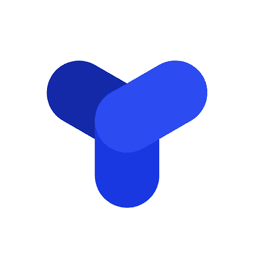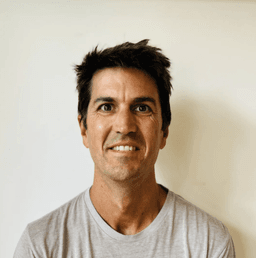How Castanet Bootstrapped to $60K MRR in Three Stages


Business Description
Table of Contents
Navigate through the case study sections
Executive Summary
Case Study Content
Introduction
Starting a software business with no funding and no team sounds impossible. Yet, in under two years, Mac Martine built and sold Castanet, a LinkedIn outreach automation tool, for seven figures. He did it by focusing only on what mattered, talking to people, rapid iteration, and then getting others to sell the software for him. In this case study, we break down how he moved through three distinct phases to hit $60K in monthly recurring revenue (MRR) with just $3K in expenses.
Stage 1: Landing the First Five Clients
Mac didn’t start with a big advertising budget or fancy cold emails. He tapped into his existing network, friends, ex-colleagues, acquaintances, and set up casual coffee chats. His goal wasn’t to pitch; it was to understand real-world pain points around LinkedIn outreach. Taking detailed notes, he asked each contact who else he should speak to next. Warm introductions rolled in, and in a few weeks he spoke with over 50 people without any cold blasting.
Armed with real feedback, Mac built a minimum viable product (MVP) in four weeks, focused only on the core feature set prospects had asked for. Re-engaging his highest-potential warm leads, he gave personalized demos tailored to each use case. By delivering real, immediate value, he was able to convert those five initial customers and validate his idea.
Stage 2: Scaling to 50 Users
With five customers paying, Mac shifted to optimize product-market fit. He started cold messaging potential users on LinkedIn, but framed his outreach as a request for feedback rather than a sales pitch. He offered free demos in exchange for honest input. Each demo call became an opportunity to refine messaging, pricing, and onboarding workflows.
He personally onboarded every new client, observing actual usage versus stated needs. This hands-on approach helped him focus only on features customers would pay for, ignoring vanity metrics. By the time he hit 50 customers, Castanet was pulling in about $10K MRR and had a documented, repeatable sales process ready for take-off.
Stage 3: Leveraging Affiliates for Exponential Growth
Moving from $10K to $60K MRR required leverage, Mac couldn’t pitch every prospect himself. He built an affiliate and reseller program, creating marketing kits, demo accounts, and discounted tiers for partners. This gave individuals and agencies a financial incentive to promote Castanet to their own networks.
Soon, dozens of partners were closing deals on his behalf. Castanet’s growth became a matter of supporting and managing that partner base instead of doing all the outreach solo. By the time Mac sold the business, affiliate-driven revenue made up 76% of total MRR.
Conclusion
Castanet’s journey from zero to $60K per month shows that you don’t need big funding or a big team to build a profitable SaaS. You need direct customer conversations, laser focus on what users will pay for, and creative distribution through affiliates. By following the three-stage framework, first customers, optimizing fit, and then building leverage, you can replicate this success in your own venture.
Key Takeaways
- 1Start with warm introductions in your personal network to uncover real customer pain points before building anything.
- 2Rapidly build an MVP that addresses only the highest-priority features identified in early customer calls.
- 3Frame cold outreach as a request for feedback rather than a sales pitch to warm up prospects effectively.
- 4Onboard each new customer personally to observe their behavior and refine the product and pricing.
- 5Set up an affiliate or reseller program to multiply your sales capacity without hiring full-time sales staff.
- 6Track only what customers pay for, ignore vanity metrics until you have solid product-market fit.
Key Facts
Tools & Technologies Used
Premium Content Locked
Subscribe to access the tools and technologies used in this case study.
Unlock NowHow to Replicate This Success
Premium Content Locked
Subscribe to access the step-by-step replication guide for this case study.
Unlock NowInterested in Being Featured?
Share your success story with our community of entrepreneurs.
Explore More Case Studies
Discover other inspiring business success stories

How Dan Henry Scaled His Skool Community to $116K/Month
This case study breaks down the exact blueprint Dan Henry used to launch and grow Get Clients University on Skool, gener...
Get Clients University

How Veresk’s Etsy Shop Earned $24K Selling Affordable Art
After losing her bank job in 2019, Anastasia from Chelyabinsk turned to painting flowers for fun. Three months in, she m...
Veresk

How Wyndly Used Short-Form Videos to Skyrocket Niche SEO Rankings
Wyndly accelerated its organic traffic by tapping into real user questions on Reddit and Quora, producing concise video ...
Wyndly